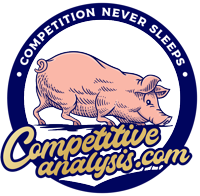Aristotle dropped the 411 on the “whole being more than the sum of its parts.”
Everyone knows that a brand is important.
Brand value chain impacts every aspect of building a strong brand, so why are marketing teams so scattered?
From which shoes to wear to which podcast to invest your time in. Every individual on your team is overwhelmed with over 4,000 daily marketing messages. For the typical resource-constrained startup with massive targets and investors breathing down the founder’s necks, it’s imperative to understand and control the factors that build or destroy value for the brand.

Mistakes are punished. Without a clear strategy, focus, and a roadmap, people get distracted by shiny ball syndrome.The impact of your team’s effort gets diluted. And at the end of the chain, you’re producing work that isn’t as impactful as it should be.
What is the brand value chain model?
It boils down to a company’s intentional and unintentional actions to build a brand. The brand value chain is a 4 stage framework of actions that result in customer and marketplace response.
The brand’s actions and the market’s reactions create a brand’s value. In the original model, each of the 4 stages has a set of multipliers (qualitative factors that influence each value stage), together they determine a brand’s value.
A brand is not a corporate identity system. It’s a person’s gut feeling about a product, service, or company.
—Marty Neumeier
The Brand Gap and value chain fit together. Your brand value chain is all the actions you take, synthesized into the hearts and minds (the gut feelings) of your audience (both intentional and unintentional) as they relate to your company’s products, messaging, recognition, and recall.
How does it work in the real world?
The brand value chain model is incomplete for real-world application because it doesn’t provide a process or system to ingest and analyze data in order to make the necessary adjustments to keep your brand healthy.
Every initiative hits a speed bump along the way. You learn, after falling on your face a few times, to set up processes and systems so you’re able to account for the organizational landmines you run into.
The opportunity presents itself in your ability to lead from the front, do the necessary actions to effectively unlock the Multipliers in the brand value chain model.
This chain is not as linear as it was originally laid out. Each stage of the chain is influenced by actions you take within the environment (both cultural and technical) your business exists.
Moving through each sub-stage, initiatives either pick up momentum along the way, or picks up arrows in the back. Internal perception of an initiative is determined by how you influence your project’s image within your business. Sub-Stages that influence the effectiveness of your Brand Value Chain: Investment Initiative — These are the things you do.
Environmental Modifiers How people perceive your actions. Internal ResponseThe organizational reaction to you. Modifiers are a response both internally and externally within an organization. Some you control, others you do not.
Evolution of the brand value chain
Lots of analysts and writers have taken on the task of quantifying how brands grow. The Science and Art of Branding takes on the concept of Integrated Branding:
A Value-Chain Model of Integrated Branding
The CMO goes directly to one of your direct reports to deliver something outside of the agreed upon plan, your team tries to prioritize one more thing. It’s a vicious cycle.
These are all the actions you take to deliver an amazing, compelling, engaging, converting, and retaining experience to your prospects and customers.
P1 Brand Value Multiplier: Marketing Program Quality
We all start with the intent of driving the best marketing program we can. We take our experience and distill it down into a group of actions we know will work.
Inevitably, the real world gets in the way… you get sleepy 5 minutes before your next meeting, and your desk starts piling up with crap you’ll take care of later. Your desk and mind gets cluttered and your output quality suffers. Brand Value Chain Quality suffers because of:
- Knowledge
- Time
- Prioritization
- Process
- Systems
- Resources
- Budget
Today’s real competition—competition that’s so pervasive we can’t even see it—doesn’t come from direct or even indirect competitors. It comes from the clutter of the marketplace.
-Marty Neumeier, ZAG
Insidious distraction clutter extends to your marketing team. Everybody is selling something new, a new platform, a new process, a new channel you need to get into. As the marketing leader, it’s your job to keep your brand value chain tight, assessing the operational efficiency of yourself and your team.
This is a chain, Stage 2 is determined by of Stage 1 Input:
In order to keep the value chain flowing, you need a way of taking stock of what is being worked on, the progress you’re making, and a sense of everyone’s capacity. If you can keep your team on the straight and narrow, you can keep your Initial Marketing Program intact. We must ensure we’re delivering brand program quality, these are some important metrics to track:
- Page bounce rates
- Opportunities created
- increased search volume in your “category”
- Page dwell times
- Lively team discussions
- 90%+ Say/Do Team Commitments
- eNPS score 50+
- CSAT scores 80+
I highly encourage anyone interested in controlling their brand value chain to read Neumeier’s complete library– he has codified brand growth into 5 disciplines: differentiation, collaboration, innovation, validation, and cultivation.
Stage 2: Customer Perception
Imagine walking by a desk filled with dirty coffee cups, yogurt bowls, open notebooks, half eaten sandwiches, no one wants to work next to that guy… “wait that’s my desk!”
Your brand value is much the same, neglect never shows up well. You need focus and attention to detail to continue to prune and act in a way that delivers a world-class product experience to your customer. Shoddy Stage 1 execution manifests in the outcome of Stage 2 — customer mindset (perception). It’s a direct result of lack of systems, governance, and quality of your marketing program.
Customer perception manifests in many ways:
- Customer churn/retention
- G2 and Capterra reviews
- Glassdoor reviews
- Relations with analysts and results in the Wave and Magic Quadrant
- Revenue churn/retention
- Conversion rates
- Content consumption rate
- Product consumption rate
- New/returning % site visitors
- Community members
- Customer service tickets
- MAU/DAU numbers
As the leader of your marketing organization it’s important for you, and your team, to be on top of these numbers. You can track these numbers on a regular basis, it doesn’t need to be too time consuming to individuals on your team. When a number changes, or isn’t responding the way you’d expect. ASK QUESTIONS!
Stage 2 Brand Value Chain Multiplier: Marketplace Conditions
This is where competitive analysis becomes uber-important.
How are your competitors reacting to your messy desk? Has anyone pulled you aside and let you know the area around your desk smells like burning garbage? Or do you get a note from HR, kindly asking you to clean up your act? If you’re losing customers, they’re most likely fleeing to your rivals.
If you could have done something about it, churn is a problem. You can always do something about it. Look at your customer base, do you have folks who are constantly complaining? What percentage of customers make up the top 80% of your revenue? Are they complaining? The forces in your market place are not blowing in your direction. Something is off in your value chain.
Stage 3: Brand Performance
I take more exception to the Brand Value Chain model at this stage. Because the theory was published in 2003, before the evolutionary heyday of “internet” marketing, I think we can evolve the theory to suit our needs.
Feedback is essential to growth, both individually and as a brand. The internet serves as a never-ending feedback loop for companies willing to look long and hard at reality.
Like the co-worker that pulls you aside and lets you know your smelly/messy desk is bugging people. The internet has sped up the feedback loop, and I believe brand value chain theory (as it is laid out today) will take too long for the typical startup. Here are the factors called out in Stage 3:
Market Share
- Takes a good long time to manifest and calculating it is darn near impossible until the dust is settled. As a manager I think there are better metrics we can track and take action upon.
- What I would track instead:
- Branded search volume month over month
- Branded search CPC (cost per click)
- Organic search rankings (top 25 keywords)
- Links to homepage (placed and organic)
- Social shares (by platform)
Price Premiums
Again, using a SaaS model, a full-on price increase is not a daily occurrence. You may be able to raise your prices once every 18-24 months, but for the CMO or VP of Marketing, this is too far removed from an actionable metric. What I’d track instead:
- ACV (average contract value)
- upgrade rate (current customers)
- Customer engagement – MAU (monthly active users)
- Churn/GRR
- Demo to close/won percentage
- Sales pipeline by prospect stage
- Customer lifecycle – lead time to close
- Community engagement
- (great competitive analysis tools to track these numbers)
Cost Structure
I argue with this as well. The smart marketer will double down when they get positive signal toward an initiative. It’s not that marketing saves money at this point, it’s that we’re able to acquire more customers at a much more efficient rate. Branded search almost always is “less expensive” to acquire a new customer, but the trick is (see expensive part) is building a brand that receives branded search queries.
Profitability
Proving profit is the most difficult and most important internal battle you will face. Investing in your attribution model early, will pay huge dividends down the line for you and your team.
P3 Brand Value Multiplier: Investor Sentiment
For a big business (with active investment), dividends and additional investment rounds are a real thing. Therefore, for the early stage startup, we really see none of this until the next funding round, or it’s time to exit. We need to redefine “investment” and “sentiment”. Investment should be seen as an increase in marketing budget, something that sounds like: CEO: “What would you say if we thought about the budget as unlimited if we can keep the ROAS above 250%?” You: “I think we can easily hit that return, no problem. By the way, how is that raise paperwork coming along?” If you’re driving real brand growth and showing your work, your CEO will be doing back flips, getting board permissions to double down on marketing and reinforcing the brand value chain. You’re bringing home the bacon… just don’t leave it on your desk.
Phase 4: Shareholder Value
Depending on your exit horizon, you delivering the goods, talks of exit (or next round of funding) should start happening. Having worked in private equity for years you will most likely be close to the talks of the exit process and potential suitors. Key at this stage of the process: DON’T LET YOUR FOOT OFF THE GAS!!! Continue to crush your numbers, continue to invest in the value of your brand, avoid missteps that could hurt your reputation. Content quality should be at an all-time-high, I mean you have an unlimited budget now, create assets that reflect it. You’ve built the entire brand value chain, now it’s time to launch that brand into the stratosphere.
